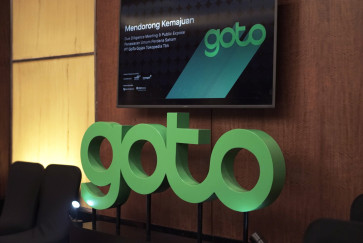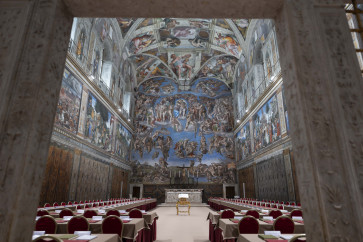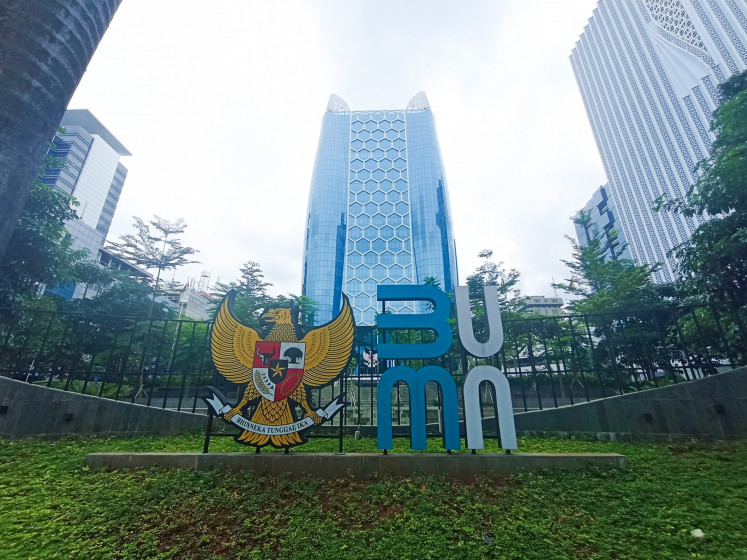Cecilia van Oers: Batik star from the past
A show for Maison Foorman fashion house in 1956
Change text size
Gift Premium Articles
to Anyone

A show for Maison Foorman fashion house in 1956. (Courtesy of Cecilia van Oers)
With a true beauty that radiates from her smiling face, Cecilia van Oers still has the charisma of a prima donna.
At first glance, Oers’ figure looks like that of a 60-something grandmother. As matter of fact, Cecilia is a 90-year-old and a mother of six, a grandmother of nine and a great grandmother of 10 from her late husbands Henk Rondonuwu and Hanny Ranti.
Cecilia Verasita Contenta Oers was born on May 21, 1922, in Blitar, East Java, to Cornelis van Oers and Emma Magdalena Manuhurapon.
Before moving to the Netherlands in 1965, Oers spent most of her life in Makassar, South Sulawesi, developing into a multi-talented person with skills including dancing (especially ballet), modeling and as a beautician.
Oers shared with The Jakarta Post that at the age of 30, she had her debut as a model in Jakarta’s first ever batik fashion show in the 1950s.
Her whole modeling career began while she was doing her ballet routine at SSS ballet school in Makassar, South Sulawesi. Some important people from Maison Foorman, then the biggest fashion house in Jakarta, saw her act, she said.
At first, Oers was confused as to why a big fashion house wanted to showcase their batik-based pieces.
“It’s because we used to know batik as a traditional outfit, especially in a form of a sarong,” said Oers in a mix of Indonesian and Dutch.
“But Maison Foorman did a really great job as they produced very nice outfits from batik, including evening dresses, blouses and some pantaloons,” she said, adding that the batik collection included sleeveless long dresses, pencil pants as well as an adaptation of white floral Givenchy dress like one worn by Audrey Hepburn.
Following independence 1945 and under the direction of president Sukarno, Indonesia began developing local products by reducing imports and increasing locally made goods, including garments.
Oers reminisced that Sukarno had a very strong will in building Indonesia to be an independent country, among other things, by producing modern attire from traditional batik.
“After Maison Foorman and its pieces became a big hit, more fashion houses like Perwari [Persatuan Wanita Republik Indonesia, or the Indonesian Women’s Association] in Jakarta and Masion v.d. Veen in Bandung [West Java] produced batik ateliers, and again, they asked me to walk in those pieces,” said Oers, mentioning that Hotel Des Indes, Harmonie and Hotel der Nederland were her best fashion venues in the old days of Jakarta when she went by the stage name Layarati van Oers.
After the success of these initial fashion shows, a wave of batik outfits spread nationwide and even overseas, thanks to Sukarno’s strong support, she said.
“Those blossoming fashion houses used more than just Yogyakarta and Surakarta’s batik fabrics, but also used traditional materials from Sumatra, Palembang and Sulawesi in producing those nice ateliers, which I believe were quite expensive,” Oers said, though she was unable to remember their exact price.
“I just came for the show. I didn’t get paid with money, but instead they allowed us, the models, to pick any clothes we wanted for free. I chose some pretty dresses, but not the ones from the runway,” she added.
Oers recalled feeling proud and excited to be picked by Maison Foorman and other fashion houses for the batik shows.
“Those dresses and blouses were so beautiful, well tailored and the fabrics were so smooth and comfortable. It wasn’t a surprise, really, to see the collection taken abroad,” she said, adding that the batik collections were not just for parties but also for picnics and visiting a grieving family.
During one of her shows in Jakarta in 1956, Oers recalled that one of Indonesia’s greatest painters, Basuki Abdullah, was interested in her for an upcoming project.
Knowing that Oers was not only graceful in ballet but also had mastered flamenco, Basuki, who had recently returned from Spain, wanted her to be a model for his next painting.
“There I was, spending at least two hours per day for several days, posing for Basuki Abdullah for his piece called The Letter.”
The painting shows two images of one girl — from front and from the right — wearing a flamenco dress.
Besides modeling, Oers kept doing ballet and giving lessons, while becoming involved in beauty business.
“My first encounter with ballet actually happened in my childhood when I went to a funfair in Makassar, and I was mesmerized by the performance of a Russian ballerina. That was the time I decided to do ballet,” she recalled.
Later, her mother took her to a number of events. “That was also the time I decided I wanted to be a beauty expert one day,” said Oers, who went on to earn several beautician certificates, including from CIDESCO (Independent College of Cosmetology) in Brussels in 1966 and Ismakogie with Austria beauty expert Anne Seidel in Breda, the Netherlands in 1977.
Today, Oers continues to pursue her passion in making people beauty and healthy.
“The thing that keeps me up and fit is that I always active. Around the world, I have at least two or three students, and in Holland I still give lessons to some people,” said Oers, who now produces home-made beauty creams.
As for all of the beautiful batik dresses she collected during her modeling career, she said that unfortunately she had to let them go, but that she nurtured the memories from those days by taking care of her priceless photographs.









